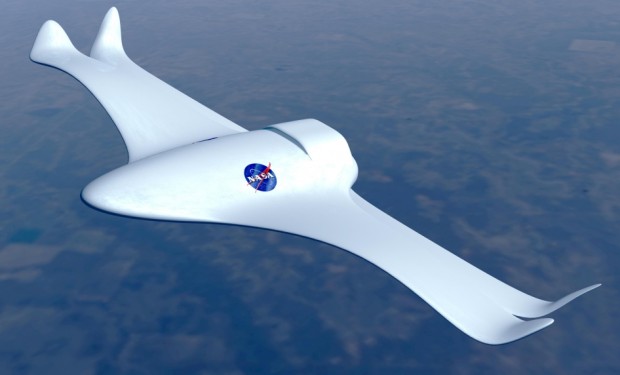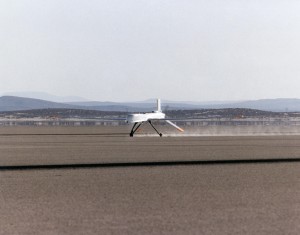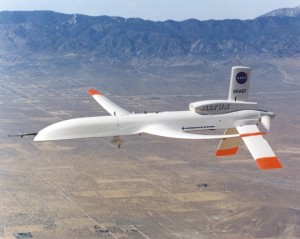Agencies play catch-up with rules and policies for drones
Both the FAA and DOJ recently released reports detailing their plans for integrating drones into American airspace while not violating Americans’ privacy.
The Campbell Law Observer twice has discussed drones in the past, identifying the privacy concerns of unmanned aircraft and detailing the states’ reactions to drone usage. At the time of those publications, however, the Federal Government and its agencies had not yet provided a set of rules and regulations within which drones would operate in America. The Federal Aviation Administration (FAA) and the Department of Justice (DOJ) recently have published reports describing how both agencies plan to address the increased use of drones in America, beginning to fill the void of federal regulations on drone use. The two agencies will play different roles in implementing federal drone policies, but they share the overarching goal of safety for the American public.
The FAA is embracing the limitless and varied uses for drones, and the roadmap provides goals for the short-, mid-, and long-term to allow drones to benefit society.
The FAA’s Roadmap (pdf) was released in late 2013 and includes the agency’s plans for transitioning drones into American airspace. The FAA is embracing the limitless and varied uses for drones, and the roadmap provides goals for the short-, mid-, and long-term to allow drones to benefit society. The FAA’s short-term policies will allow drones into American airspace on a limited basis that the agency refers to as the “accommodation phase.” In this current accommodation phase, individuals wishing to use drones must apply for an airworthiness certificate from the FAA. This certificate insures that the threshold requirements for aircraft to fly are met. Because drones are a newer technology, uniform standards throughout the industry do not exist, thus the certification process and accommodation phase are designed to make sure the individual drone is worthy of flying in American airspace.
While accommodating drones on an individual basis currently, the FAA is collaborating with a number of groups to create minimum baselines for drones that would allow them to be integrated into the FAA’s current system. Once these minimum design guidelines are in place, the FAA can move from a policy of accommodation to one of integration. To further this, the agency created the Unmanned Aircraft Systems Integration Office in 2012 to streamline the agency’s interaction with those with a stake in the use of drones. The new office is tasked with creating the above-mentioned standards for drones, as well as training requirements for those involved with them, including pilots, maintenance crews, and air traffic personnel.
The final and longer-term goal for the FAA is to stay on top of the evolving technology of drones; this is a research and development-centric area for the FAA. To that end, the FAA solicited proposals from a number of states and institutions to conduct testing that will help to bring drones into the mainstream of American airspace. On December 30, 2013, six sites were chosen from twenty-five proposals to begin the research that will help integrate drones into the American skies. The sites were chosen to cover America’s varied geography and climate zones, and will be located in Alaska, North Dakota, Nevada, Texas, Virginia, and New York. The FAA hopes to have at least one of these sites up and running in the next several months. Harking back to the privacy concerns associated with drones, the FAA has required the testing facilities to comply with federal and state privacy laws.
The DOJ’s report outlines the agencies under its command currently using drones and the recommendations the DOJ has for creating a better environment for drone use.
In a more specific area of drone use, the DOJ issued a report on its usage of drones (pdf) in the fall of 2013. Four of the agencies under the DOJ’s command reported using drones, but only one, the Federal Bureau of Investigation (FBI), used drones in an operational capacity. The Bureau of Alcohol, Tobacco, and Firearms (ATF) hopes to use drones operationally in the future, while the other two, the Drug Enforcement Agency (DEA) and the United States Marshals Service (USMS), do not plan to use them in their operations. The agency in which most Americans would be interested would be the FBI, as it is already using drones operationally and possesses the resources to spark further debate over the privacy concerns associated with drone use.
The DOJ reported that the FBI did not believe specific privacy policies relating to drone use needed to be implemented. Instead, the FBI noted that they saw no difference in manned versus unmanned surveillance. Its agents used the privacy guidelines for manned aircraft when deploying drones for surveillance. (Note: As of the issuance of the DOJ’s report, the FBI’s drones did not carry weapons but were merely used for surveillance, and the associated concerns of drones equipped with weapons was not discussed.) The DOJ noted that it did believe drones posed separate privacy issues from those associated with manned aircraft and that these concerns may force the DOJ to create privacy regulations for drone use by all of its agencies. Before creating specific drone privacy regulations, the DOJ has recommended that agencies under its purview that are currently using or wish to use drones provide their thoughts on whether such policies are required.
AUVSI predicts that in the decade following integration that drones could have an economic impact over $82 billion.
The FAA has taken a positive step in implementing a roadmap for the accommodation and future integration of drones into American airspace with its 2013 Roadmap. If the FAA can create and implement the threshold airworthiness requirements, both for drones and the individuals using them, drones finally will be able to begin to be used for various purposes in daily life. The Association for Unmanned Vehicle Systems International (AUVSI) predicts that in the decade following the current predicted date of integration, 2015, that drones will have an economic impact of over $82 billion on America and could create over 70,000 new jobs in the first three years of integration. Every year the FAA delays in integrating drones, though, could result in losses of up to $10 billion from this predicted economic impact. This should give the FAA even more reason to push forward in their plans to integrate drones into the American airspace.
Within the FAA’s framework, the DOJ is dealing with the privacy concerns of using drones in a law enforcement capacity. The law enforcement related functions drones could provide create the greatest concerns for individuals’ privacy and may be the biggest roadblock in fully integrating drones into the American airspace. Time will tell if the FAA can move quickly enough to realize the great potential of drones for American society.







